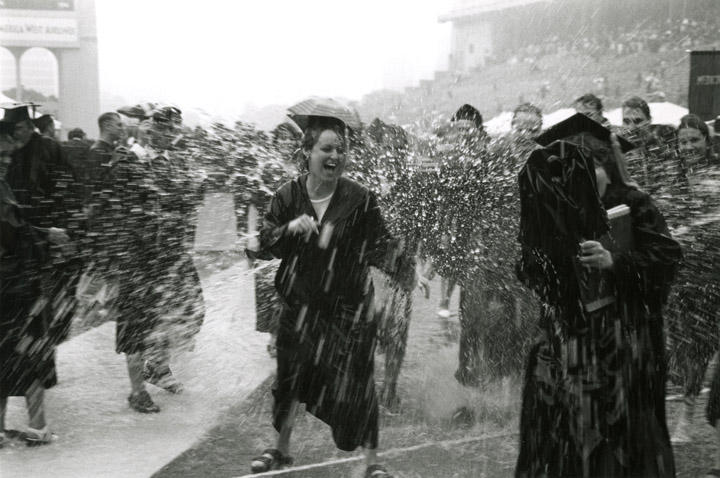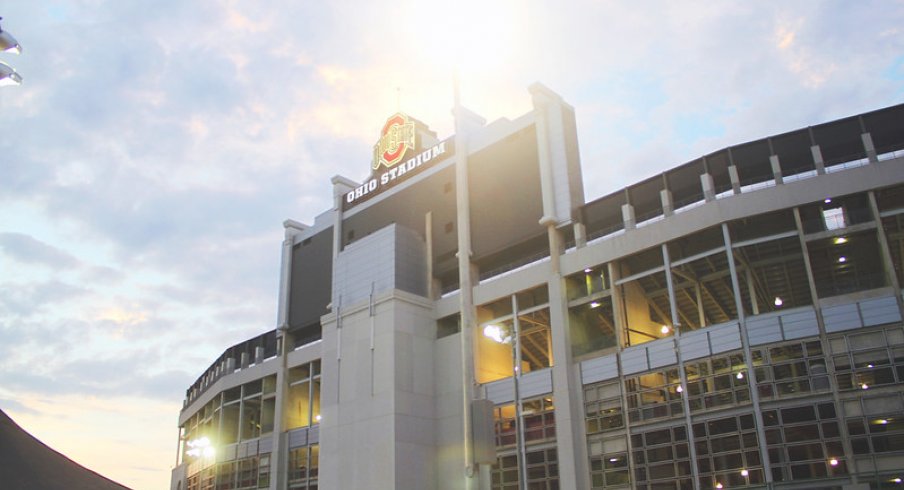Time and Change is a weekly series highlighting the history of some of Ohio State's storied traditions.
THEN
Built in 1922, with a capacity of 66,210, Ohio Stadium remains a proud college football landmark and the home of Buckeye football.
As demand for Ohio State football rose, a bigger stadium became necessary. Replacing Ohio Field, which stood at High St. and Woodruff, the first game in The Horseshoe was on October 7, 1922 against Ohio Wesleyan.
The double-decked stadium in the shape of a horseshoe was designed by Howard D. Smith and cost $1.3 million. The design was based off of the two largest stadiums in the nation at the time, Harvard and Yale. At its inception, Ohio Stadium was one of the largest stadiums at the time.

Many modifications to the stadium have been made over the years. The first one in 1926 after fans in standing-room-only, rioted after Ohio State’s close loss to Michigan. Ohio State quickly did away with standing-room-only after the incident.
Bleachers were installed in the south end zone that eventually became a permanent installation, bringing the capacity up to 82,000.
In 1944, a proposal was submitted to attach a new campus auditorium to the north side of the stadium. The proposal was met with backlash over fear of ruining the iconic horseshoe shape. The auditorium was built away from the stadium and is known as St. John Arena.
At one point in 1991, there were seats added to the upper south end zone, causing some to have a blocked view due to the scoreboard. The stadium’s exposure to the elements caused for multiple costly repairs to the exterior and infrastructure.

In 2000, a major renovation took place. The track around the field was removed and the field was lowered, adding another deck of seats. The scoreboard was updated and the south end zone was officially enclosed bringing capacity to about 99,000.
Woody Hayes’ run game was the main force behind the first installation of artificial turf in 1971. In 1989 natural grass was reinstalled in Ohio Stadium, after the uptick in injuries sustained on artificial turf. In 2007, a softer artificial turf was installed in the stadium.
The Horseshoe is the host for other events during the year, besides football. I’ll go into this more in another post, but the stadium became home for some students at the onset of the Great Depression.
Other uses include: a theatre, research labs, lacrosse field, site for the Columbus Crew and spring commencement.
In 1997, spring commencement in Ohio Stadium was cancelled due to torrential rainfall. My dad was one of these few lucky graduates who were a part of one of the only graduations to be cancelled. When I say torrential, I mean torrential. Knee-deep water covered the field.

NOW
Ohio Stadium still stands tall with a current capacity of 102,780. It is the third-largest stadium in the country, based on capacity.
The current record attendance is 110,045 when the No. 2 ranked Buckeyes faced the No. 3 Wolverines in 2016.
It has stood the test of time through damage from vandalism, fire and floods.
I could write over 1,000 words on the history-rich landmark, but the hallowed ground will surely come alive once again when Ohio State takes on Wisconsin next weekend.


